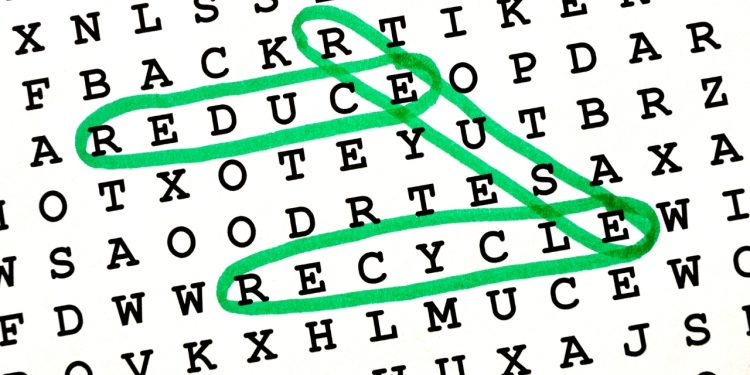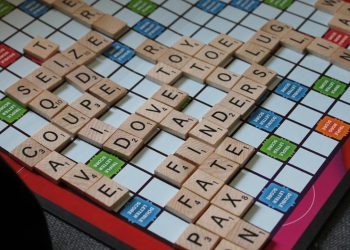Do you already have a daily routine that includes staying glued to a specific word puzzle? If yes, do you eagerly look forward to the copy of the puzzle that is sent to you every other day? There’s something fantasy-like about the blend of creativity and difficulty that solving the puzzle comes with. As a puzzle creator and enthusiast, enjoying crossword-style puzzles myself, I understand everything that goes into making a daily word puzzle, or rather, how to unlock its algorithm. That is why today’s discussion is about a specific algorithm.
Whether you like it or not, the puzzles that give you a hard time out there and that you like so much are curated through the magic of an algorithm, and if you would like to know, it is not magic out of a fairy tale book – it is fashioned through math, creative logic, and, of course, a sprinkle of human-generated creativity. So, here is what you have been anticipating: the cogs and gears that work behind a daily word puzzle.
The Significace of Algorithms in Puzzles
Before moving too far ahead into the details, let’s answer: what is the significance of an algorithm integrated into a puzzle? Well, think of ease of scalability, fairness among participants, and increased user engagement.
Creating a custom puzzle every day completely by hand is far too tedious and susceptible to mistakes. Pulsar algorithms, on the other hand, make it possible to produce new puzzles on a regular basis and with superior efficiency.
- Fairness: No one would want to solve a puzzle that is excessively easy or insurmountably difficult. Balanced puzzles are made possible using algorithms, as they help ensure fairness. Through carefully crafted fairness algorithms, puzzles with a wider range of skill appropriateness can be designed.
- Engagement: Algorithms also guarantee a level of creativity that ensures players are kept excited and interested. Algorithms driven by data can customize puzzles per player by analyzing data on what captured their attention most.
Breaking Down The Daily Word Puzzle Algorithm
Starting with the daily word puzzle, several interrelated components make it whole. Below is a breakdown on how it works.
1. Word Selection
The backbone of each word puzzle is the pool of words associated with it, also referred to as word bank. For this reason, almost every algorithm possesses a super-sized word dictionary, but not all the words are, however, algorithm friendly. A case in point.
The use of words like CAT or DOG which are short and commonplace is likely too easy. In the case of ZYZZYVA, a rarely used term, it can lead to player frustration.
Balancing these competing problems requires that algorithms sift through words to determine their length, prominence, complexity, and use in casual speech. Some themes like Ocean or Winter Holidays even narrow down to match the themed word list to the puzzles.
2. Generating Puzzle Layouts
After selecting the words, the algorithm creates a layout. For crossword puzzles, this involves word arrangement into a grid, while for word searches, words must be strategically placed and filled with random letters.
Steps in the generation processes include:
- Optimizing Space – It must not be too crowded.
- No ambiguity must be present, making every word and clue connect logically.
- Adding symmetry, diagonals or clever overlaps make pleasing patterns.
3. Difficulty Calibration
One of the most challenging things in puzzle creation is balancing the difficulty. It is necessary for an ideal puzzle to require the player to think without swinging into frustration. Algorithms tackle this issue with:
Studying the level of difficulty associated with words. Words that are shorter pose less of a challenge like longer or less common words.
Blunt clues are helpful to lower the difficulty of puzzles while cryptic or puns heighten it.
Evaluating user engagement: In this case, some algorithms rely on machine learning to track and determine the amount of time-relation users spend solving a puzzle to whether or not they complete it. This helps improve the design of future puzzles.
4. Randomization with Rules
Rules of some sort must be in place, as said randomness ensures added variety. As an example:
Avoiding duplication of phrases or words.
- Using a combination of long and short words.
- Making sure a theme, if appropriate, appears throughout the text.
How Machine Learning Optimizes Puzzle Creation Processes.
Now it gets even better: modern heuristics employ machine learning to develop more intelligent puzzles. These algorithms adapt and improve from analyzing player behavior. For example:
- Customization: Some puzzles become more difficult the more you play them, creating an optimal challenge.
- Pattern recognition: Such algorithms can spot trends such as the types of words players have the most difficulty with and adjust accordingly.
- Feedback loops: Should players continuously avoid a certain type of puzzle or battle with specific clues, machine learning can tailor future puzzles around meeting player preferences.
The machine may have taken care of the bulk of the work, but the best puzzles still benefit from a human touch. A puzzle’s creator regularly uses a spreadsheet to carry out final adjustments. This involves scrubbing word lists, vetting clues, and ensuring the merge is captivating.
For example, while the algorithm may offer “PENGUIN” as a themed word for a winter puzzle, a person would attach a For example, a witty clue like, “Always dressed for the occasion, and flightless” could help. These minute details make puzzles much more warm and enjoyable.
Why You Keep Coming Back for More
With word puzzles, the sense of achievement and joy is unlike anything else. Algorithms help in this regard by:
- Offering puzzle variety with no repetition.
- Adding just the right amount of challenge.
- Keeping puzzles interesting and engaging.
It’s because of this problem-solving creativity that you burst with excitement every time you encounter a new puzzle. These are not just games; they are brain-training puzzles that improve your mood and help sustain your thirst for knowledge.
A Behind-the-Scenes Peek at Puzzle Jam
If you’re into word puzzles, it is close to impossible not to have heard about Puzzle Jam. Puzzle Jam is an epitome of the merger between algorithms and creativity. Here at Puzzle Jam, we employ cutting-edge algorithms, and best understand what players cherish most, to produce enjoyable, challenging, and highly rewarding puzzles.
We have taken all of the above from human ingenuity to algorithms with relying on AI to ensure that every Puzzle Jam challenge is a guaranteed success. Our team continuously adjusts and fine-tunes the algorithm to sustain engagement and entertaining players.
Do You Think You Have What It Takes?
Let’s see how well you know word scrambles. Puzzle Jam offers a different challenge every day whether you’re a beginner or a word pro.
You can now play Puzzle Jam and enjoy the optimal mix of creativity and inventiveness of human work alongside technology. We’ll see you at the top, or in the leaderboard as we call it.














